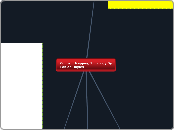Making lessons accessible to every student
Why?
To Accommodate
vs.
To Modify
(in 504 plans)
Modification examples
(what student learning)
reduced learning objectives
reduced number of laps to run
Newslea (same content at lower/higher reading level)
Accommodation
(same materials, adjust how student learning)
Study skills workshops
Take breaks
Exercise bands for fidgetty students
Tests in smaller group settings
See written list of instructions
Record lesson or get from others instead of taking notes
Student choice
Sit where they want
Can complete project in format of choice
browser functions:
dictation, spell check, TTS/display (Immersive Reader)
extra time for same test
eye glasses
To meet students where they are
distance between what children can do by themselves
and the next learning
that they can be helped to achieve with competent assistance
Scaffolding
(break down the task)
Pause, Ask Qs, Pause, Review
hold during uncomfortable silence
first, discuss in pairs
first, provide individual reflective writing time
Use visual aids
(to represent relationships,
sequence, cause-effect)
fish
essay template
mind map
Pre-teach vocabulary
(before the challenging text)
during Bell Ringer
in context
using analogies and metaphors
with photos
Give time to talk
(to process new info, ideas)
Triad Teams
Interviewer,
Interviewee,
Recorder
Turn-and-Talk
(face/shoulder buddy)
Think-Pair-Share
Tap into existing knowledge
(own life, past learning, current events)
Article
Image prompts
Question prompts
Model first
(what is expected)
Think aloud
(your thought process, solve a problem)
Fishbowl
(center group models for outside group)
Differentiate the task
using tools/strategies
Flashcards sets for each unit
(for asynchronous review)
Extension Menus (for gifted learners)
Universal Design for Learning
...based on...
...students'...
if falling asleep,
sit at back of class to complete task
(not go out for a walk)
Readiness to learn
low emotional, physical maturity
personal circumstance
internal
(lack of confidence, anxiety)
external factors
(poverty, family violence)
Interest
Learning ability (i.e. goal)
(so not "under-achievers")
...elements of the class...
4) learning environment
grouping options
- work in similar readiness groups with peers who manifest similar academic needs at a given time
- of mixed readiness work together in settings that draw upon the strengths of each student
- work with classmates who have like interests
- of varied interests cooperate towards completing a task that calls on all their interests
- work with those who have similar learning patterns (a group of auditory learners listening to a taped explanation)
- work with students with varied learning patterns (an analytic student and a practical student) to complete a task
- work with whoever is sitting beside them
- count off into groups
- draw a partner’s name
- choose who they work with.
3) Product to generate
ways of expressing learning
ways of assessing
2) Processes
1) Content
time
materials
essay prompts/research topic









